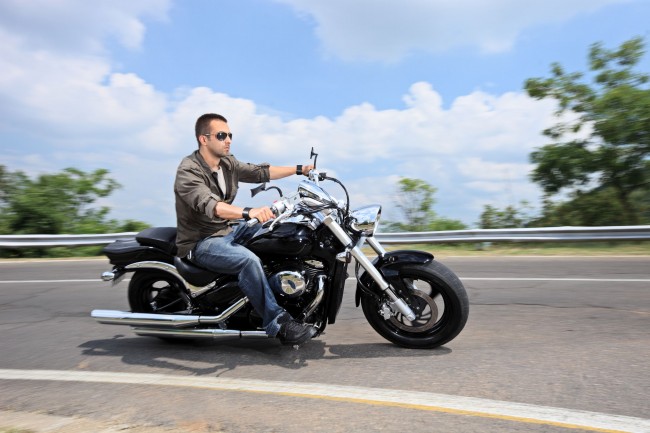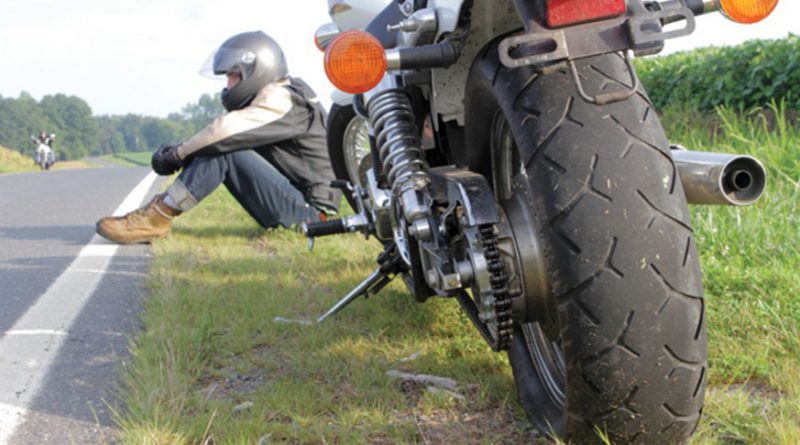Safety tips for motorcycle riders

Riding a motorcycle is an exciting and adventurous experience. But riding a motorcycle safely is also important as it could be very dangerous if you do not follow safety precautions properly.
In 2019 motorcycle riders were 29 times more likely to die in road accidents compared to people who drive a car.
When you see statistics like these, every motorcyclist must take safety very seriously while riding a motorbike. Here you can find some safety tips for motorcycle riders that can help you take precautionary steps while riding on a busy road or a freeway.
Take a Safety Course
Taking a safety course will help the bikers understand the rules of the road for motorbikes. It also helps them learn to take proper actions during impulsive riding conditions when they come across those situations.
Driving a motorbike needs good judgment and good skills, and a safety course can help you understand all the road rules and make you practice these.
Check the Weather before Leaving
Ice, rain, and snow can cause a hindrance when you decide to drive in such weather conditions. This kind of weather is very dangerous especially for bikers when they decide to drive. It’s because the biker will have less control and lesser visibility compared to the person driving the car. If the weather condition is not suitable to ride, then choose a different day when the weather cooperates so that you can enjoy your drive
Wear Motorcycle Accessories
Wearing the required motorcycle gear can safeguard you from the components, road rash, and debris. Proper motorcycle accessories include a DOT-approved helmet, chaps or leather pants, non-slip gloves, and ankle-length boots. Also, the motorcyclist must dress in layers to protect to accommodate any changing weather the entire day.
To decide which motorcycle gear is best for you, Roadsnug is a reliable source. By seeing a list of already handpicked top motorcycle items you can make a wise decision quickly.
Check Your Motorcycle Thoroughly Before Each Ride
Inspecting your motorcycle every time you go out is the best safety tip. Checking the motorcycle before hitting the road can assure you it is perfectly safe to ride.
Check your taillights, headlights, brakes, turn signals, tire pressure, oil, handlebars, mirrors, and horn.
Follow Traffic Rules – Drive the Speed Limit and Use Your Signals
Following traffic rules keeps you safe on the road. It may sound curative, but it is essential to obey traffic rules. Drive as per the speed limit posted on the road and street, use signals whenever it is required all these techniques help you avoid accidents.
According to the IIHS (Insurance Institute of Highway Safety), 48% of deaths of motorcyclists have occurred due to high-speed riding.
Be Visible
Most motorcyclists assume that other drivers on the road can see them clearly. But, the US DOT’s National Highway Traffic and Safety Administration published a Hurt Report that shows in 1981 around 75-percent of motorcycle accidents occurred due to other drivers on the road not seeing the motorcyclist.
That is why it is important to remain visible on the road. You should not drive on blind spots, make sure to drive with your headlights on all the time even when you ride in the daytime. Use hand turn signals always.
Be Alert and Watch for Road Conjectures
Driving protectively allows you to foresee road hazards and traffic problems. Gravel, oil, and sand particles can make you lose your balance. Potholes and bumps are also hazards, and you should notice everything carefully to avoid accidents. While crossing railroad tracks make sure to cross at the proper angle.
Maintain Safe Distance
Tailgating is a common mistake that people make while driving. You must know that tailgating is not right and it is not safe at all. It is recommended to maintain a safe distance from the vehicle ahead of you. It gives you the time to stop in a tense situation.
Keep a First-Aid Kit in the Glove Box
Keeping a first-aid kit in the glove box will be very helpful when you get an injury while riding a motorcycle. The first-aid kit should include bandages, disinfecting wipes, Band-Aids, adhesive tape, and gauze.
Join in an Advanced Riding Course
When you take an advanced course it helps you practice your riding skills, and also helps you enhance your riding ability. The course helps you understand collision avoidance tactics, control tips, braking techniques, and advanced turning.
Check Your Ride
Make sure to inspect your bike before riding. You should check every time you take a ride, and check for tire pressure, lights, and mirrors, and look around the bike for any leaks, loose bolts, or any other probable mechanical threats.
Also, you must maintain regular maintenance and regular care of your motorbike. If you want any issue with your bike, fix it as soon as possible. Make sure to follow all recommended maintenance, including suspension and chain adjustments, oil changes, brake pad, and tire wear.
Use Your Head
The motorbike has mirrors for a reason, and you cannot completely depend on them to stay mindful of what is in your close riding space. You should be aware of your surroundings and your place in connection to those near you; you should use your head while riding a motorbike.
Conclusion
The feeling of riding the motorbike is surely a powerful and enthralling experience that everyone wants to experience at least once in their lifetime. Furthermore, it is very much possible to overlook the potential dangers in excitement. That is why a rider needs to make sure safety comes first while riding a motorbike.
Also, one should ride what they can handle. Avoid buying a motorbike based on its looks, instead buy a bike that will be easy to ride and easy to handle. Moreover, it is significant to consider whether you need a scooter or a bike. Currently, you have plenty of options available in the market. You can look for different models and mileage. It doesn’t matter which bike you ride, you must follow safety rules while riding your bike.

